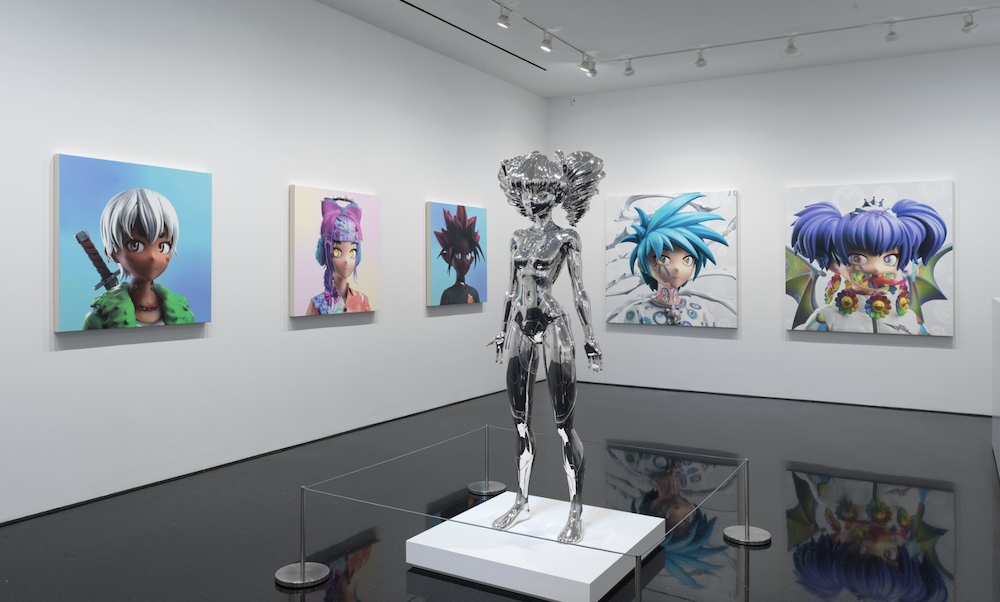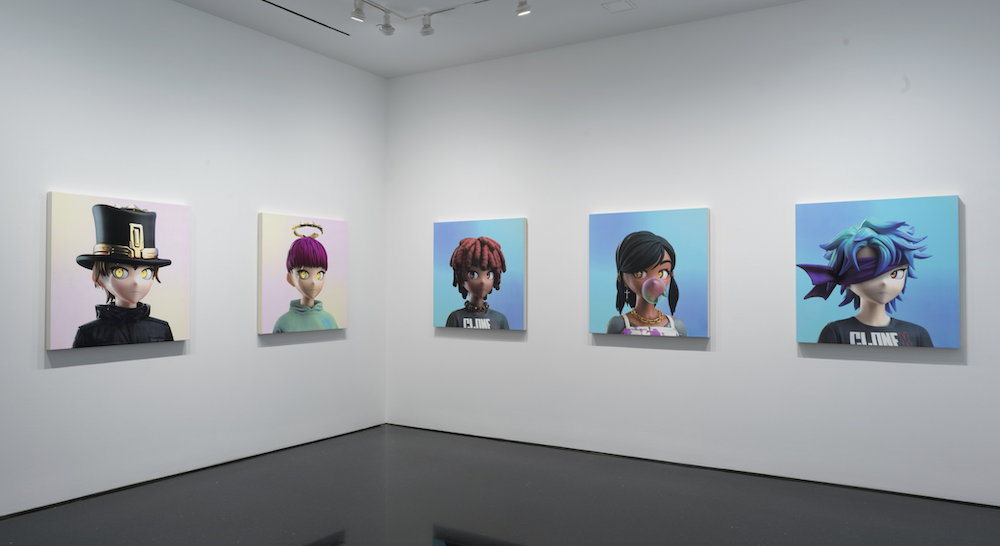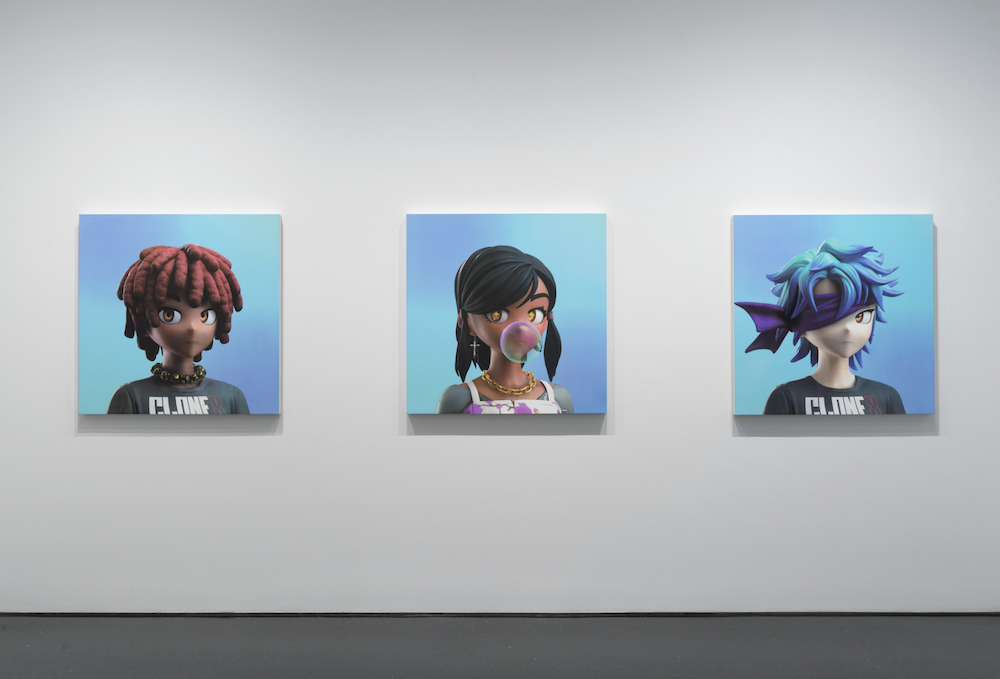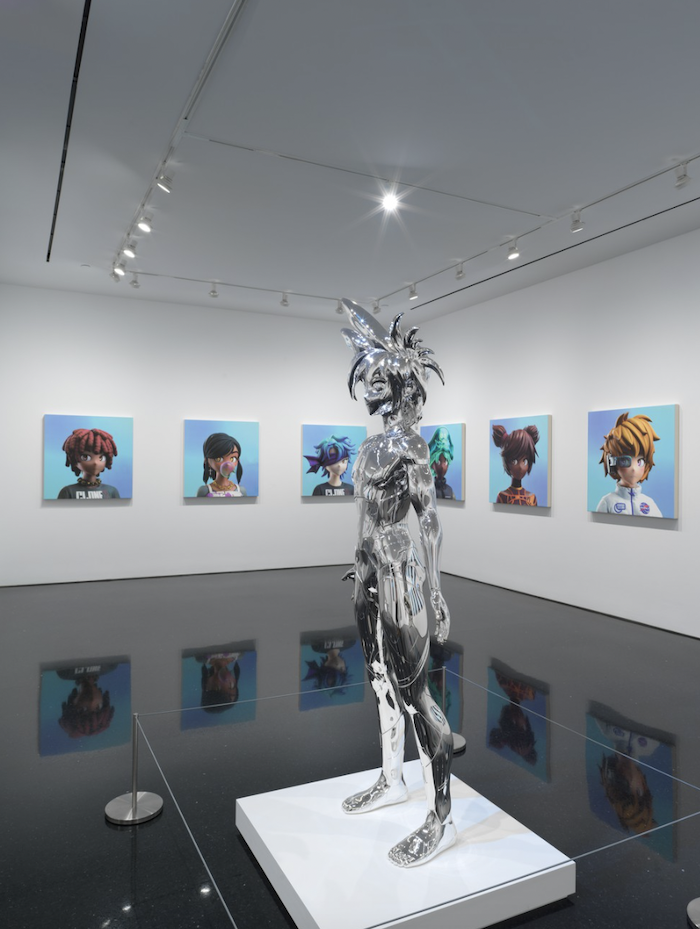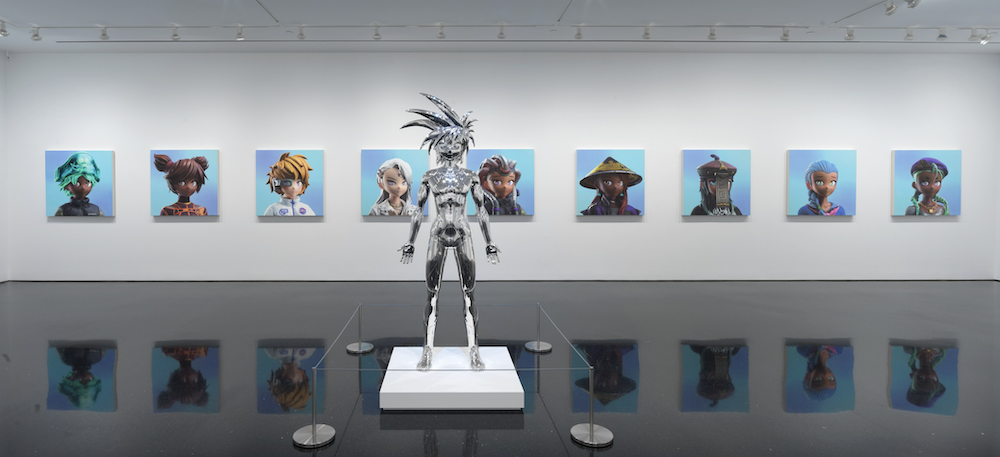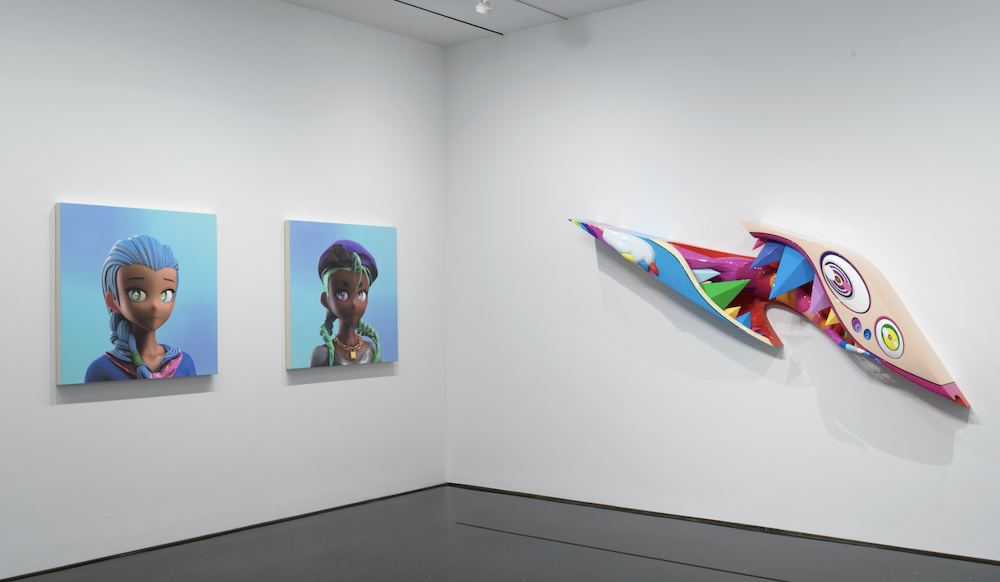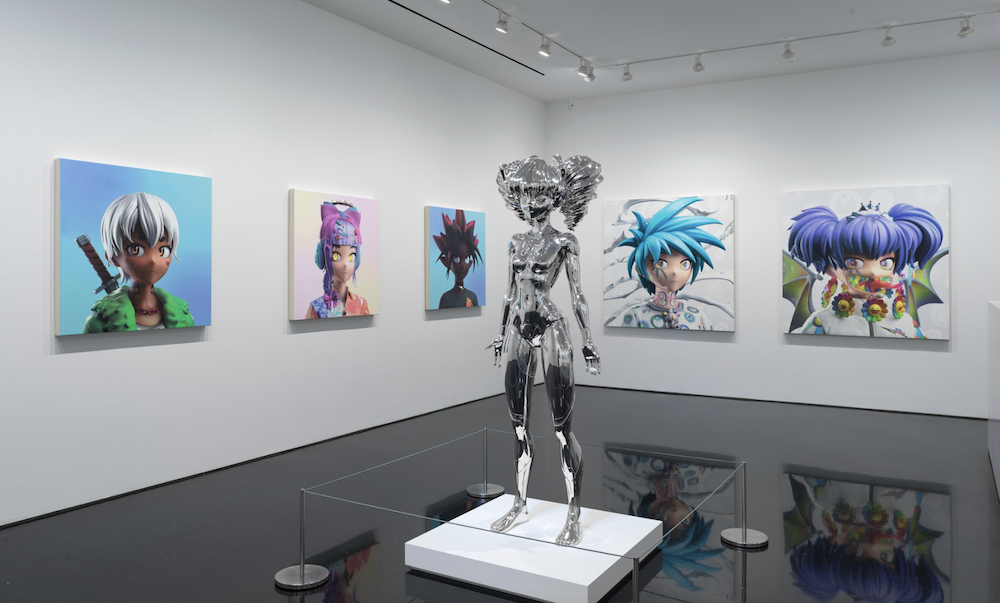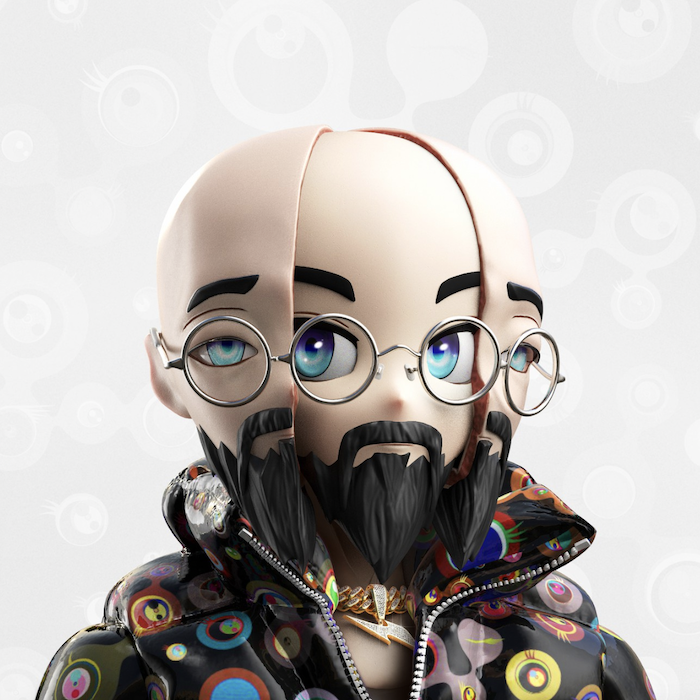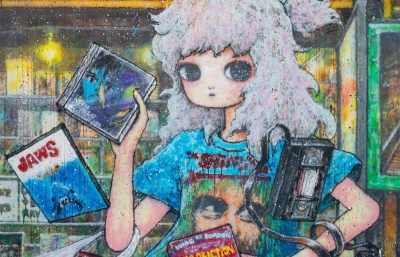If there was ever an artist who could flip our perceptions on contemporary art in one gigantic wave of ideas, Takashi Murakami has been at the forefront of these shape-shifting concepts for two decades. He challenged what we considered to be high art in his Superflat concepts, brought fashion and art together in new and exciting ways and has now changed the way artists use the metaverse, perhaps forever. An Arrow through History is his first exhibition since a major breakthrough into his NFT career, a move that is not only one of the biggest in art but also sees the Japanese artist experimenting with how to present these crossover elements into a physical gallery setting.
From the gallery: Murakami’s presentation at 976 Madison Avenue consists of works based on the Clone X NFT initiative (2021), which he developed in collaboration with RTFKT Studios. Clone X is a series of NFT avatars conceived as three-dimensional figures bearing the artist’s distinctive motifs. The works at Gagosian translate the digitally modeled NFTs into meticulously detailed, hand-painted portraits and full-scale figurative sculptures—physical manifestations of art created for the metaverse. As Murakami explains: “When I work on a creative production, I make no distinction between digital and analog. I’m always working in the context of contemporary art, and that context is all about whether I can be involved in events that manage to trigger a cognitive revolution.”
This is the key, too, to where other artists contribute to and make work that fits both into the metaverse and gallery setting. How do artists use the tools from each place and create something in sync. Murakami has always been able to balance dichotomies in a way that felt natural and cerebral, and this show is just another revolution he is championing. —Evan Pricco

